Calliham Unit – McMullen County
Highlights:
-Great variety of birds in one location
-See south Texas species without driving all the way to the Rio Grande Valley

The Location
The Calliham unit of Choke Canyon State Park is located on a large, wide peninsula that juts out into Choke Canyon Reservoir. The abundance of quality habitat combined with the surrounding water makes it one of the best birding hotspots in this area of the state.
Many south Texas species can easily be found here, such as Green Jay, Great Kiskadee, Harris’s Hawk, Audubon’s Oriole, Least Grebe, Mottled Duck, and Olive Sparrow. If you want to see these birds without driving all the way to the southern tip of the state, Choke Canyon is a great alternative at just over an hour south of San Antonio.

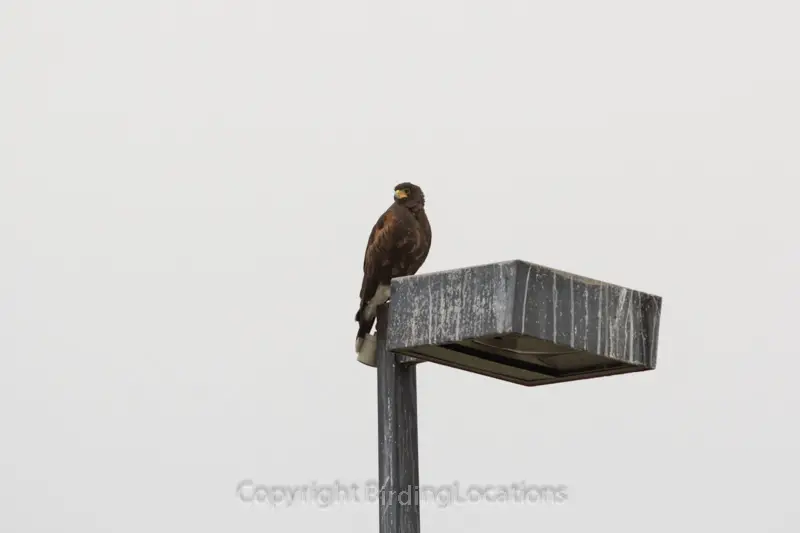
A full morning of birding here will yield a great mix of woodland species, waterfowl and waders, and raptor species. Expect around 60 species in a full morning with decent weather.
Birding Recommendations
For a great experience, birders should visit these three areas:
- The Boat Ramp Area
- 75 Acre Lake
- The Bird Blind
Calliham Unit Boat Ramp
This open area is mostly a parking lot with boat ramp access, but because it’s surrounded by trees and water, this transition zone of multiple habitats creates an excellent spot to see birds. Overall bird activity is often very high here during the mornings.

Take your time walking the edges of the parking lot. Green Jays will be calling and moving around in family groups. Look for flycatchers in the large trees in the middle of the parking lot. Common ones include Eastern Phoebe, Great Kiskadee, and Vermillion Flycatcher.


Next to the boat ramp there is a sidewalk along a narrow peninsula that overlooks the water. Not only is this a great vantage point to scan for ducks, grebes, herons, and gulls, but the cattails along the walkway are good for sparrows, Common Yellowthroat, and sometimes wrens.

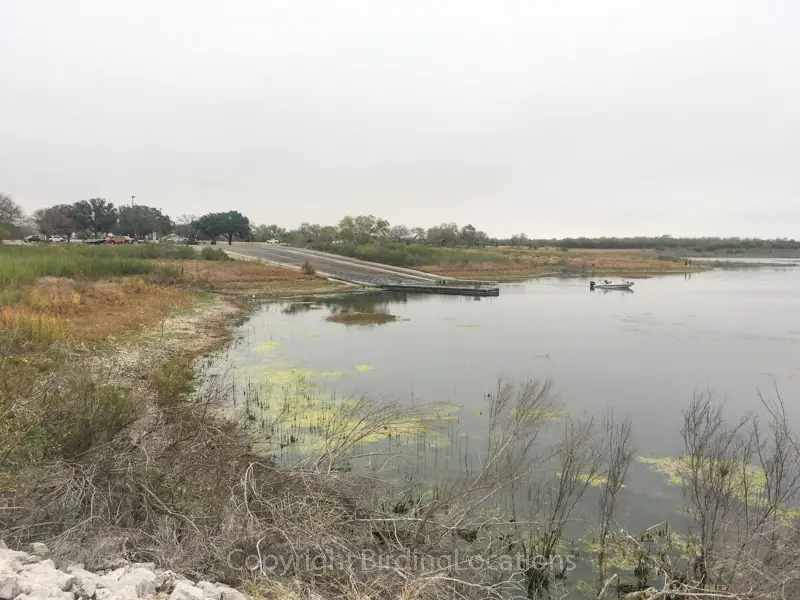


Finally, check the day use area will the small pavilions and grills. Sparrows may be hopping around in the short grass. Pipits and blackbirds could also be here on the ground during winter months.
75 Acre Lake
This lake and the area immediately around it is good year-round, but winter can be especially exciting as the lake will usually have several hundred ducks floating on the surface. A spotting scope will be needed to identify the more distant ducks, but the closer ones can be seen with binoculars easily enough.

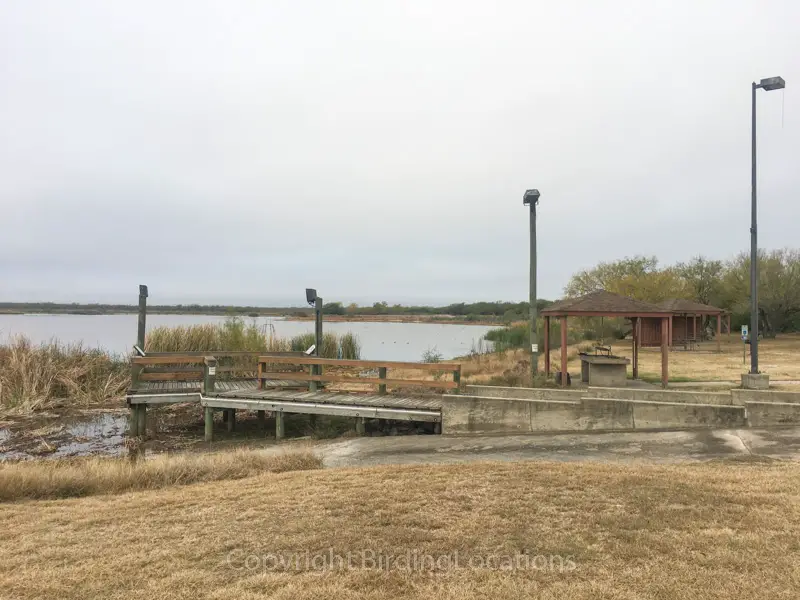
The walkway along the skinny peninsula is the perfect spot to watch for birds. Common Gallinule, Common Yellow, and Marsh Wren occur in good numbers in the cattails during the winter, and can be seen at close range from the walkway.

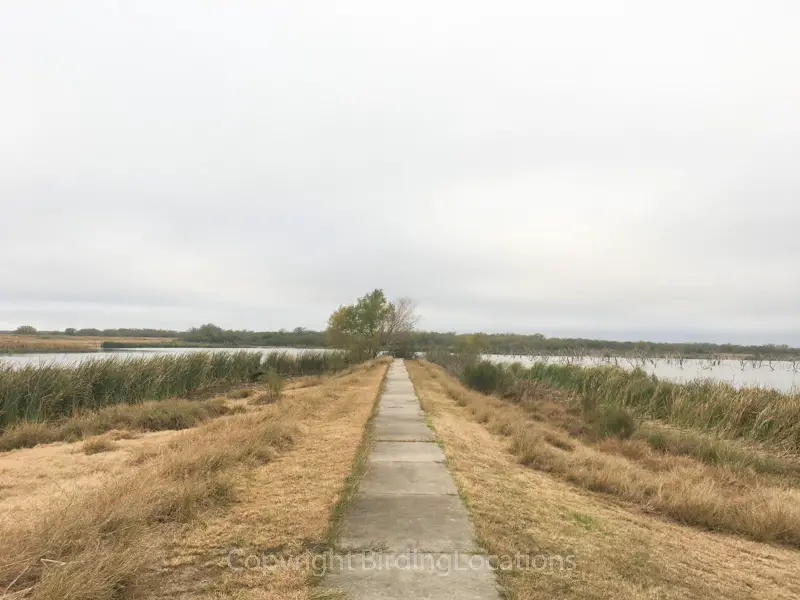


The campground at the edge of the lake can also be decent. Woodpeckers and flycatchers will be moving about, and hawks may be perched around the perimeter of this area.

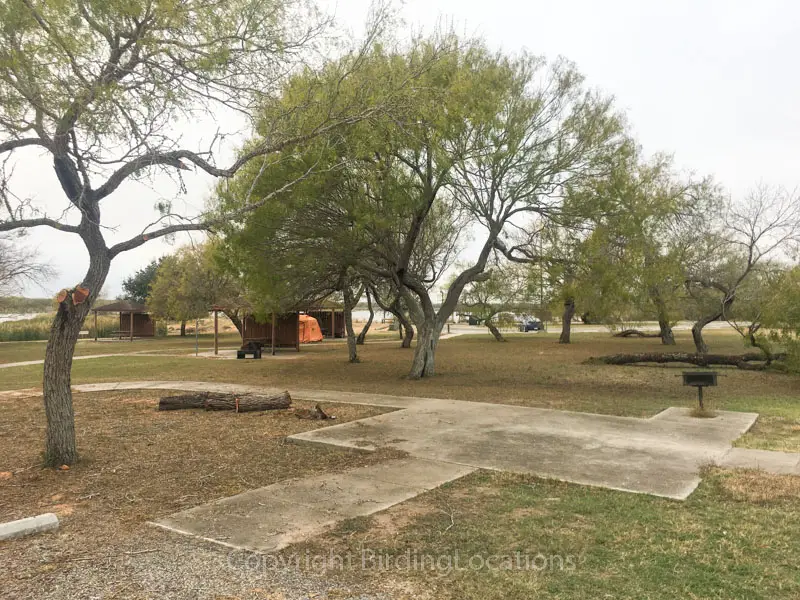
The Bird Blind
The blind is located at the north end of the park, right across from a bathroom building. Expect to get great looks a Audubon’s Oriole, as they often visit two or three at a time. Try to get here before the morning gets too late, otherwise much of the food will be eaten and the birds will retreat back into the trees.


The camping/RV area immediately up the road from the blind can be decent for birds and may be worth walking for 10-15 minutes.

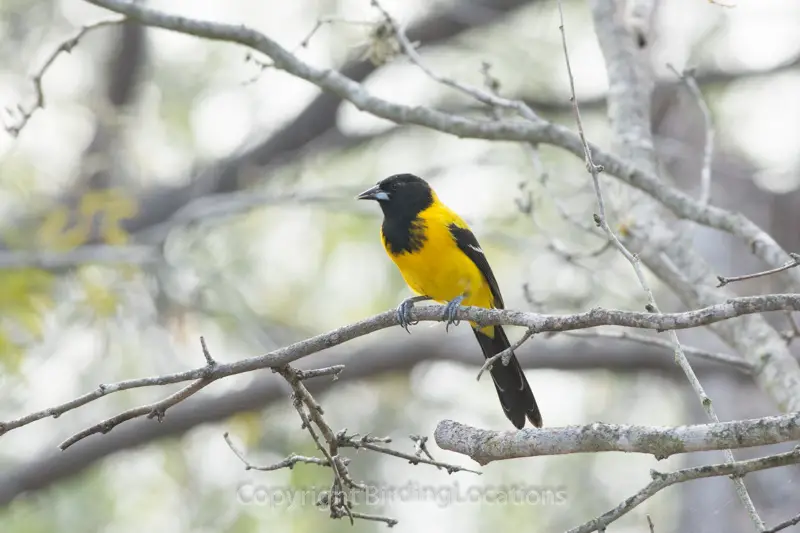
Other Important Info
Entrance is $5 per person.
Office hours are 8am to 5pm, except on Friday when the office closes at 10pm.
